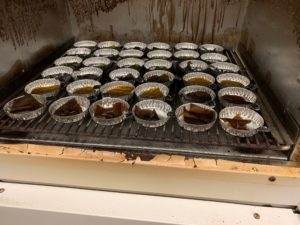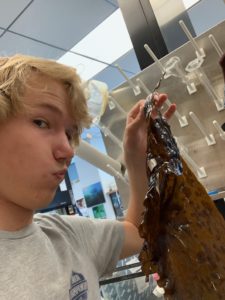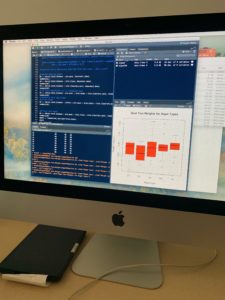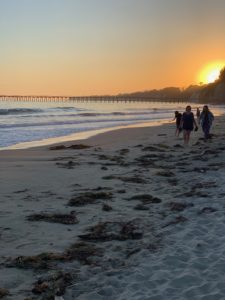Hello, hello, and good day fellow super nerds. This week was my second week working at the Marine Science Research Building in Santa Barbara, California. I could go off on this blog about how I had to suck up urchin feces with a large straw but I will save you the stomach juices. Misleadingly, it was actually a very opportunistic and educational work week filled with a lot of data collection.
Monday consisted of urchin assessment. I measured the diameter and weight of all 15 red urchins and all 15 purple urchins that we will be feeding over the next two weeks. A caliper – a handheld measurement device – was used to perform these measurements. Unfortunately, one grad student working towards a Ph.D. in Marine Biology, one undergraduate at Oklahoma University studying botany and currently writing a book, and one Pinhead, did not have enough combined brain power to catch on. We ended up lugging an 80-pound cooler filled with urchins up and down the lab stairs multiple times before Katrina finally realized we could just do all of the measurements in the sea urchin holding room. This was a rough epiphany at the moment but I believe the character building that we endured was priceless.
Onto our algae. We actually received another species of algae that we integrated into our experiment this week. Cystoseira is a species of rockweed also naturally consumed by the two species of urchins. Before we let any of the urchins feed, we had to take samples of Cystoseira and the other 5 species of algae to the dehydrator. Next week, after all of the algae is completely dehydrated, we will grind it into a fine powder for CHN analysis. 40-gram bunches of each species of algae were also necessary in order to start the urchin feeding process. Each urchin must have identical algae availability to begin experimentation. After inserting all of the
algae into each urchin holding tank, the experiment was officially underway. Although the experiment had started, the data collection did not stop here. We needed to cut dog-bone shaped samples out of all the seaweed we had left. These would be sent to the analytical lab for an elasticity test.
Katrina also brought in new urchins for a second experiment we will start this next Wednesday. Since these urchins were fresh out of the ocean, they were heavily excreting. So heavily, that the water was becoming uninhabitable. We had to do something about the murky water, and since I was finished with data collection, I was nominated for the duty. There was a long plastic tube that I had to siphon the water out of the tub with. To be completely honest, some of the water got into my mouth, but I started the siphon near the seawater entrance so it was the freshest and least contaminated that did. Repulsive, repulsive, repulsive.
After a small spiel about urchin defensome and gene sequencing, I finished the week learning about a program we will use to analyze our experimental results. Rstudio is a widely used coding application among ecologists and the one that everyone in the Marine Science Research Building utilizes. I practiced using Rstudio by graphing all of the data sets that we had collected throughout the week.
When not collecting data this week, Bryce and I spent some time at the movies, some time floating in
large donuts, and lots of time on the tar-sand beaches where the tar is absolutely relentless. We would return after only a couple of hours on sunbathing and spend 45 minutes in the shower scrubbing the black gunk off of our flesh. I ended up using an entire jar of peanut butter just for tar-scrubbing. It was surprisingly effective and exfoliating with all of the peanut chunks.
The week came to an end at the cinema in downtown Goleta where Bryce and I watched the 9:50 horror, Crawl. Great idea but terrible execution. 6/10.





There are no comments published yet.